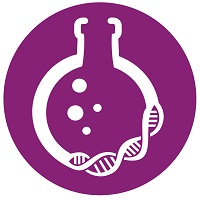Bioanalytics
Symposium: Novel Instrumentations in Bioanalysis
Ion Mobility Spectrometry (IMS) and its Integration with Mass Spectrometry
Wednesday, November 12, 2025
9:30 AM - 10:00 AM CT
Location: 221 CD

Brandon Ruotolo, PhD (he/him/his)
Professor
University of Michigan
Ann Arbor, Michigan
Speaker(s)
Medicines of the future will rely heavily upon our ability to quickly assess the structures and stabilities of complex macromolecular machines and evaluate the influence of large libraries of conformationally-selective small molecule binders. In addition, the ever-growing and complex array of protein and nucleic acid-based biotherapeutics similarly demands improved tools that can rapidly detect changes in therapeutic structure upon target binding, alterations in formulation, or stress. Current structural biology tools lack the throughput and sensitivity to meet these challenges. Ion mobility, a technology that can separate biomolecules according to their sizes on the millisecond timescale, in combination with mass spectrometry, is a disruptive technology in the structural biology space – offering rapid and sensitive readouts of biomolecular structure within mixtures. In this presentation, I will discuss recent developments surrounding collision induced unfolding (CIU) methods. CIU uses ion mobility-mass spectrometry (IM-MS) to measure the stability and unfolding pathways of gas-phase proteins, without the need for covalent labels or tagging, and consumes 10-100 times less sample than almost any other label-free technology. Recent developments in high-throughput CIU screening methods, their ability to track small alterations in structure over a wide array of biotherapeutics will be discussed.
Learning Objectives:
- Upon completion, participants will be able to understand and interpret ion mobility-mass spectrometry data acquired for biotherapeutics.
- Upon completion, participants will be able to understand and interpret collision induced unfolding data acquired for biotherapeutics
- Upon completion, participants will be informed as to the current status of ion mobility-mass spectrometry instrumentation and data analysis methods

